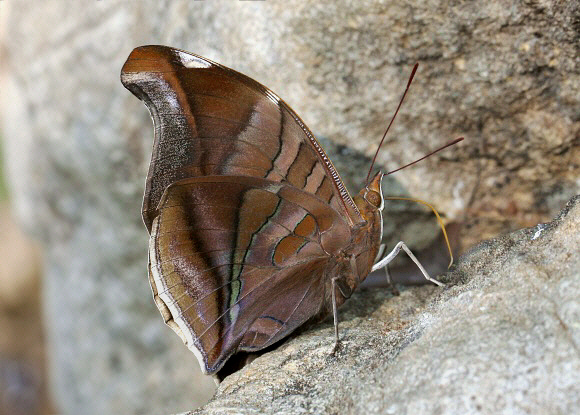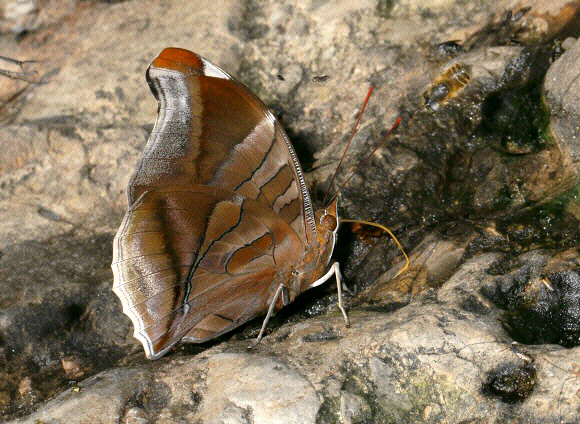
Introduction
This large (wingspan 11cms) and magnificent butterfly, marked on the upper surface with a broad swathe of bright orange on a black ground colour, is one of 12 species in the tribe Coeini, which also includes Baeotus, Colobura, Tigridia, Pycina and Smyrna.
There are only 2 species in the genus Historis, the other – acheronta, is a smaller greyish species which has a group of white subapical spots on each forewing, and short tails on the hindwings.
The vernacular name Stinky Leafwing, and the species name odius are probably references to the odorous rotting fruits to which the butterfly is attracted.
Historis odius is a common and very widely distributed species, found from Texas to Peru, Bolivia and northern Argentina.
Habitats
This species occurs in a wide variety of forested habitats, from the humid deciduous woodlands of Nicaragua and Guanacaste, to the rainforests of the Amazon basin and the premontane cloudforests of the Andes. It occurs at altitudes between sea level and about 1600m.
Lifecycle
The egg is pale brown, and laid is singly on the midrib of a leaf of Cecropia (Moraceae), a very common tree in disturbed habitats.
When small the larva constructs a chain of droppings along the midrib. The larva rests at the end of this frass-chain, which extends beyond the tip of a leaf. The chain seems to act as a tight-rope over which ants will not walk, and thus prevents the larva from being molested. It probably also deters parasitoid wasps and flies, making it difficult to oviposit on the larva. The fully grown larva is brown with yellow bands around the segments, which are adorned with yellowish whorled spines. Another pair of short whorled spines emerges from the head.
The chrysalis is pinkish, and adorned with whorled spines in the abdominal segments, and bears a pair of horns on the head which are recurved and appressed to the thorax. It wriggles frantically if molested.
Adult behaviour
This species is usually encountered singly. It is a swift and very powerful flyer, which swoops down from it’s perches high in Cecropia trees to feed at fermenting mangos, plantains and other fruits lying on the forest floor. Both sexes visit fruit, and can be easily baited with fermenting plantain pasted onto tree trunks in open glades, orchards and forest edge habitats.
Males are also attracted to damp rocky overhangs, peccary wallows and rock strewn riverbanks, where they imbibe moisture to extract dissolved minerals.
When settled the wings are held erect, but are flicked open periodically if the butterfly is nervous. The sudden display of the bright orange bands on the upperside probably serves as a warning to predators – orange colouration in butterflies is often an indicator of toxic qualities.

